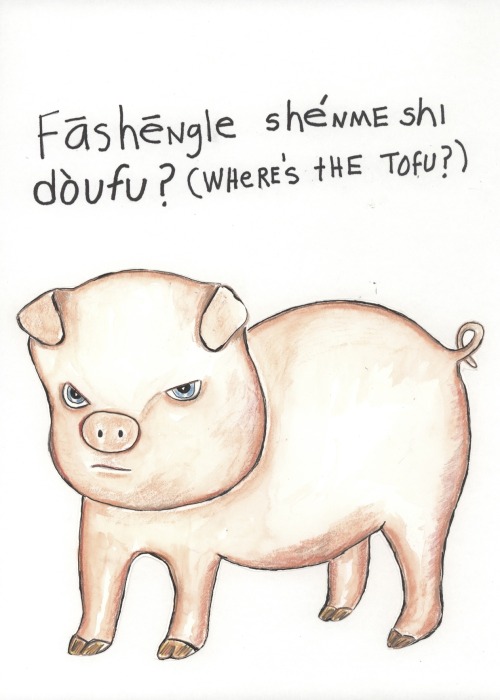
Mark your calendars: 2017. That’s the date when, some climate experts are now saying, irreversible climate change is likely to become locked in unless we do something FAST. This means that it would no longer be possible to avert flooding interspersed with droughts, therefore seriously wrecking agriculture. It means 1700 American cities under water. What else, I don’t know.
Climate change is mostly caused by too much carbon in the atmosphere. Since that carbon takes at least 100 years to dissipate, even 1000s of people buying Priuses or putting up solar panels (while wonderful) isn’t going to be enough to turn things around. It isn’t going to be enough to stop the debacle which could come as early as 2017 or as late 2020.
But there is hope.
In case you haven’t heard, livestock is responsible for at least 51 percent of human-induced carbon and other greenhouse gases. That’s according to the respected Worldwatch Institute which published a report in 2009 by environmental specialists Robert Goodland and Jeff Anhang of the World Bank Group, a United Nations agency.
That’s cheeseburgers, bacon, eggs and vanilla shakes, folks.
Fifty-one percent.
And those environmental specialists have explained how replacing livestock products with plant-based products will also free up land to plant trees, which can suck up the excess atmospheric carbon. More trees happens to be a very big deal. And the reverse – losing the rain forests – is also a very big deal.
If this sounds like another “go vegan” pitch from me, it’s not. You actually don’t have to go totally vegan or totally vegetarian to help.
The solution is for people around the world to not only plant trees but also to replace close to 50 percent of today’s livestock products with better alternatives, according to the website “Chomping Climate Change.” Better alternatives are everything from grain-based meats to soy milk, nut butters, whole grains, and legumes.
While livestock emit a lot of carbon through carbon dioxide in respiration, livestock also emit a lot of two other highly potent greenhouse gases: methane and nitrous oxide.
The thing that’s handy about methane and nitrous oxide as opposed to CO2 is those chemicals largely dissipate from the atmosphere within 8 years, quick enough so that large-scale replacement of livestock products with plant-based alternatives could allow us to make a real difference and head off the 2017 tipping point.
But Houston we do have a problem, which is some unfortunate news that I recently acquired from an off-the-record yet credible scientific source: Even if the entire United States goes vegan, that’s not going to be enough to head off this environmental catastrophe.
It has to be the whole planet replacing close to 50 percent of animal-based foods with something else, something else like lentils or potatoes or Beyond Meat stir fry or tofu, or, hell, vegan banana bread.
Currently, China is eating one fourth of all the animal foods on Earth. One fourth.
India with its huge population of over a billion people, too, is chowing down animals. While consumption of animal foods has dropped a bit in the US (population 316 million) it’s increasing in India to the tune of 12 percent a year and there’s no sign that it’s letting up!
OH CRAP! OH FUCK! OH SHIT! (sorry for yelling in this post, but I’m upset.)
One of the reasons that we’re not going to be able to have a little climate change free oasis in, say, the Bay Area or the Pacific Northwest is that greenhouse gas is “transboundary.” It means that green house gases don’t respect borders, so if somebody is raising pigs in China or cows in Brazil or chickens in Alabama, there’s still going to be an epic tornado in Oklahoma or an epic hurricane in the Philippines or a flood in San Francisco.
But before we all pack our bags and head for Mumbai and Beijing with our Vegan Outreach leaflets, it’s important to consider this embarrassing statistic: As individuals, we Americans consume more animal products than anyone else in the world. Per capita we consume twice as much as the Chinese.
India really humiliates the United States. Per capita we Americans consume 19 times the chicken and 10 times the pork that they do.
I once had an unpleasant conversation with Bill McKibben, the founder of 350.org at a 2012 Bioneers conference. I hassled him for not bringing up the fact that animal food consumption is a big factor in climate change.
He was pissed and so was I. He asked me where did I think the biggest increase in meat consumption was happening and I told him I knew it was in the poorer parts of the world that were staring to develop economically.
“And how are you going to ask people who are just now starting to be able to enjoy eating meat that they can’t eat it?” he said.
When it happened I was a bit discombobulated, but now I would have answered to him that “meat” isn’t just pork chops these days. Check out the dictionary. It defines meat as an essential food that includes alternatives to livestock products (http://www.merriam-webster.com/dictionary/meat). Again better alternatives to animal foods can be legumes, whole grains, potatoes, Annie’s veggie burgers, tempeh bacon, etc.
I would have also said that the only reason that animal-based foods have become hip in the so-called “developing world,” is they’re taking their cues from the more affluent countries — that would be the US, that would be Europe. Even if the whole U.S. going vegan isn’t going to be enough to turn around climate change, we’ve still got a huge important job to do here now: Make plant-based cool. Make animal foods obsolete.
As friend and fellow activist Bee Uytiepo says, “Eat like a real environmentalist.”
— A Vicious Vegan blog post —
